Saving California condors: A Q&A with Kelli Walker
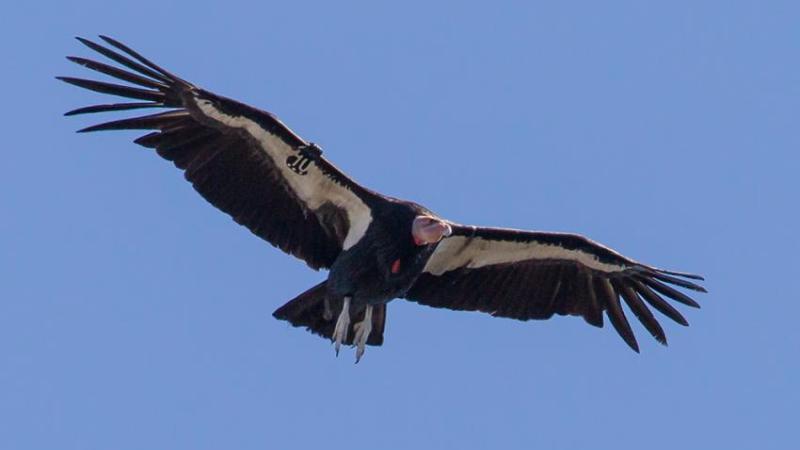
At one point, there were only 22 California condors left on Earth. Today there are nearly 500.
This is thanks to a species-recovery effort spearheaded by four organizations, including the Oregon Zoo. Kelli Walker has overseen the conservation breeding program for this critically endangered bird at the zoo's Jonsson Center for Wildlife Conservation since 2004.
OZ: What surprised you about condors when you first started this work?
K: I had no idea how smart they were. How dynamic they are. Condor society's actually pretty complicated and very structured. It's almost like a troop species of primates. There is a social hierarchy, and there are a lot of social behaviors that they need to know before they get released.
OZ: What is a California condor?
K: The California condor is a critically endangered bird. It's the biggest bird in North America. They are soaring birds, and their wingspan is 9.5 to 10 feet, and they're about 3 feet tall, and they weigh around 20 pounds. They're scavengers, so they only eat dead stuff.
OZ: How did they get so close to extinction?
K: For years, people collected their eggs, collected specimens. And then they would be poisoned. People believed that the condors would come down and kill baby lambs and calves, when in fact they were probably just feeding on those carcasses. Power line collisions, habitat degradation.
So they were also susceptible to poisons put out for coyotes, bears and wolves. Now, lead ammunition is the main threat. Almost 50 percent of all condor deaths are due to ingesting lead ammunition. So that is our big hurdle to overcome.
OZ: How does lead get into their system?
K: Condors eat anything dead, so gut piles, varmints that were shot and just left out. Livestock that is euthanized and left. That's their job and that's how they live. While they're eating that, they ingest the lead fragments that are scattered throughout that carcass, and once they ingest it, it starts working its way into their system, and they become poisoned by lead.
OZ: What is the Oregon Zoo doing to save condors?
K: We are trying to get anybody who uses lead ammunition, or ammunition in general, to stop using lead and switch over to different ammunition. So that's one approach.
The other approach is through breeding facilities like ours.
OZ: What's the goal of the breeding program?
K: Our focus is to produce as many chicks as possible to be released in the wild. That's it. And to make them the best birds they can be when they're released.
OZ: With the stakes so high, do any parts of the job give you anxiety?
K: There are a lot of things that can go wrong during a breeding season. The first one would just be that the egg that was laid is infertile. They just didn't get the job done. So in that case, if we really think we can get another egg from that pair, we'll go ahead and try to have them re-breed and re-lay, and see if we can't get a fertile egg.
We have a female right now who's not laying. We don't know why. We've done every test on her. She's genetically valuable. She won't lay an egg.
When you candle an egg [holding an egg in front of a light source], there's a very specific look to how the embryo is supposed to be positioned, and the blood vessels and the yolk. If it doesn't look like that, it may indicate that there are problems with that embryo in the development, and you really have to monitor. But occasionally it will die, and there's nothing you can do about it.
If it doesn't die, there's a chance that it could be malpositioned, which means it's not sitting the right way in the egg and it can't hatch by itself ... which means it will die. So we take an X-ray of it, and we try to figure out how that chick is in that egg so we can crack a hole in it, give it some air while not causing it to bleed to death. It can be quite complicated.
If it doesn't have a problem, and hatches normally, occasionally they'll get something that's called an umbilicus infection. They have a bellybutton where the bird was attached to the yolk sac. Sometimes that doesn't heal correctly, or is exposed. They get an infection, and they die when they're two or three days old.
The parents can fight over it, and accidentally kill it, which has happened. We almost figure once we hit like day 10, the chick is fine, and it's being fed, and it's warm, we've got this. Until they hit about that day, it can be touch and go, and occasionally you have to pull that chick. The parents just aren't doing what they're supposed to be doing.
OZ: How do you match condors for breeding?
K: Pairs are recommended by our geneticists. We like to say they're paired for life, but they're usually at least paired for several years. If they produce a lot of chicks, then we might re-pair them to mix up the genetics again, but they're paired for a lot of years.
Condors can be difficult because they are like old married couples. They fight. They squabble. They get along. You never know what you're going to get one year to the next. Occasionally, we have birds that are like, I'm not doing that this year. But basically, we put them together and hope they have chicks.
OZ: How do you work with other breeding centers?
K: The California condor breeding facilities are run by the Oregon Zoo, the L.A. Zoo, San Diego Zoo, and World Center for Birds of Prey in Boise. The original birds that were brought in have really important genetics, so we all hold a segment of the population that is very genetically valuable.
We are told what male would go with what female to make the most robust chick. For instance, we have a female, 108, who is now single. Our geneticist will run those numbers, and she's like, "Oh, she would be great with 55 in L.A." So we figure out who can house them, and then they'll ship up or I would ship down, and then we would pair them.
We also transfer eggs around to different facilities. Sometimes an institution will run short an egg for various reasons, and maybe we'll have an extra one. So we'll send it down there so the parents can raise it.
We're very cooperative and try to be pretty fluid with the program so everybody has what they need. It's a small community.
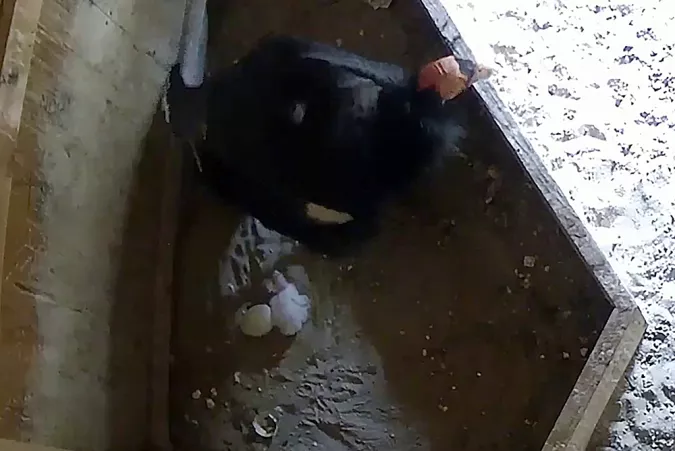
OZ: How do you make sure a condor is equipped to survive in the wild?
K: In our pre-release pen, we have older birds that the youngsters go in with. That older bird always eats first when he wants to. He always gets the top perch when he wants it. They have to defer to that bird for everything, and he has to let them — like, OK, I'm done feeding on the carcass, now you can go.
They have to learn that they can't feed with the older birds, or they have to wait their turn, and they actually work it out within themselves too. You'll have a chick that is very confident and very comfortable, and then sometimes you'll have that chick that's not very confident, and those are the ones you have to keep an eye on. Are they feeding OK? Are they getting pushed to the side too much?
You have to make sure that they're eating and perching and socializing well enough, even though they're the lowest on the social scale, to be released. If they are not showing all those behaviors, we will not send them out for at least another year.
OZ: How do you train them to avoid power poles?
K: Power poles make a fantastic perch for a condor, because they're out in the middle of nowhere, you can land on them easily — it's a great perch. Unfortunately, their wingspan is so big that they can electrocute themselves really easily. So, to combat these electrocutions, they came up with power-pole aversion therapy.
You put a power pole in their pre-release pens, and you run a hot wire across it. It's just an electric fence that you would use on a farm or something, but when the juveniles go to land on that, it gives them a shock and they learn. Usually, it only takes once. They land on that, and they will never land on it again.
Since that was instituted, the program has not lost any condors to landing on power poles, so it worked really well.
OZ: How do you care for these birds without being seen?
K: We don't want the condors to get used to people. To do that, we have to stay out of sight. So 80 percent of the time, we actually manage the birds via watching them on cameras.
The other part of it is, everything is done behind visual barriers. We make sure that they can't see. There's no cracks where they can see us walk through. There's one-way glass. We turn our phones off, and we try not to talk down there. Everything is done to limit their exposure to people.
We do a pretty good job, especially with the chicks. They get pretty disturbed when they see us. A lot of times, the only time they see us is when these giant primates come in, and we pick them up, and we take them, and we pull blood from them, and we give them shots, and we do mean things to them, and then put them back, and it was a horrible experience. So they don't like us very much!
One of the reasons that remote location was chosen for this project is to really lessen the human impact on the birds. But also, they see a lot of predators out there, which is, I think, kind of important when they are released. They know what a coyote is — those older adult birds get nervous when the coyotes are around, and those juveniles see it. They're like, OK, that's bad.
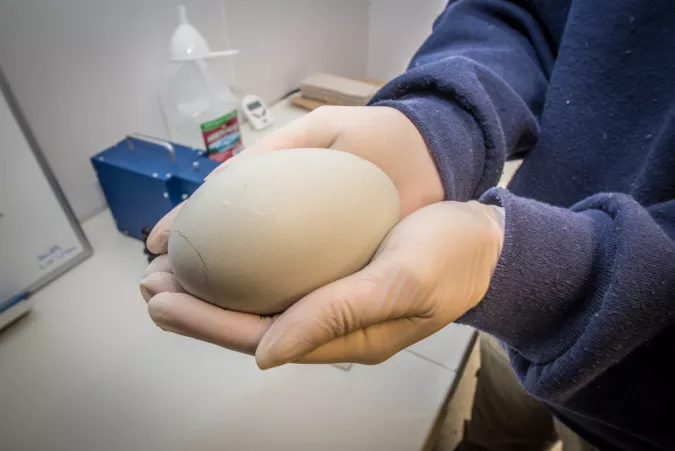
OZ: Are the eggs incubated by their parents?
K: Condors really only lay one egg every year or every other year. There are ways that we can get them to maybe lay two eggs a year, but for a condor to reach breeding age, it has to be at least 6 to 8 years old. These are slow reproductive birds. It takes them a long time to get to be adults.
So when you have one egg, and that's all you're going to get out of this pair a year ... I mean, there's a lot of money and time and investment in a single egg, and we need to take as good of care of it as we can.
All California condor eggs that are laid go through some natural incubation under the parents, but then they are pulled to an incubator, and the egg is actually replaced with a dummy egg. The parents don't really know that we switch it out, they're incubating an egg.
There are a few reasons we pull the eggs into the incubator. One is to see if it's fertile. If it's infertile, they maybe need to breed again. If the egg is fertile, then we can also see how that embryo is positioned in the egg. If it's positioned in a certain way, we're like, Great, OK, everything looks fine. If it's turned, we may anticipate problems later on, or if something's not developing right. So all along the way, we can catch if there's a problem.
We also ensure that that egg is not going to be injured during the incubation process. Occasionally, the parents fight in the nest room. It's normal, but sometimes they will kick the egg accidentally. It's always an accident, but something will happen, and it happens now to the dummy egg. The real egg's never in danger of being injured. So, it's just a way to really keep that egg safely in an environment.
OZ: What are condor chicks like?
K: I think they're pretty cute ... but they're kind of ugly. They hatch out white. Their heads are really pale. They have giant eyeballs.
They reach this peak fluffiness, and it's usually like their 45-day checkup, and they get really angry when you come into the nest with them, and the fluff's flying everywhere, and you go in to catch them up, and they're really angry at you. So, yeah, you have a giant ball of angry fluff trying to attack your leg. You're like, Really? It's pretty awesome. Small fluffy balls of fury!
OZ: Why should they be saved?
K: I think, personally, we have a responsibility to not let things go extinct. They almost went extinct because we pushed them so close to extinction.
They're a very important part of the system. They may not be pretty to you, but they're very important to the ecosystem, they help stop the spread of disease and are part of nature's clean-up crew. Then the other thing is, the range is so big, and when you protect something for the California condor, all those species that live in the area that's protected by them are also in a way protected. So they're kind of an umbrella species.
OZ: Is the breeding program working?
K: It is working. There's some data that specifically says the more birds you can get out, the better it's going to be in the long run. So we're working on increasing production, which is hard. But yeah, it's working. We're getting there. The California condor population went from a low of 22 birds, and we are up over 460 birds at this point. So it's pretty substantial.
OZ: Are you hopeful that they'll recover?
K: I think if we got past the hurdle of them dying from ingesting lead, our job would pretty much be done. I wouldn't have to do this anymore. All the other things that they're dying of, at this point, are pretty natural causes of death with some exceptions. We're losing half of them to eating lead.
The range of the California condor is already expanding out from the original release sites. Eventually it would be nice to see them throughout their historical range. They went from Baja California all the way up to B.C., so we'd like to see them back in Oregon. We'd like to see them up towards Washington.
I think it's going to take some time, but I think we can get there. There's more education that needs to happen.
More News
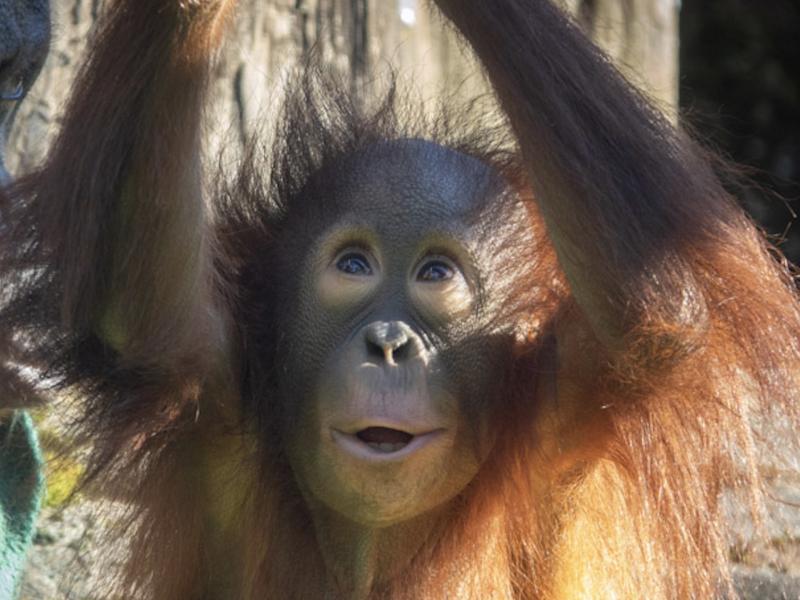
Jolene turns 2: Zoo to celebrate orangutan's 2nd birthday
The littlest member of the orangutan family is celebrating a big milestone this week: Jolene will turn 2 on Saturday.April 12, 2024
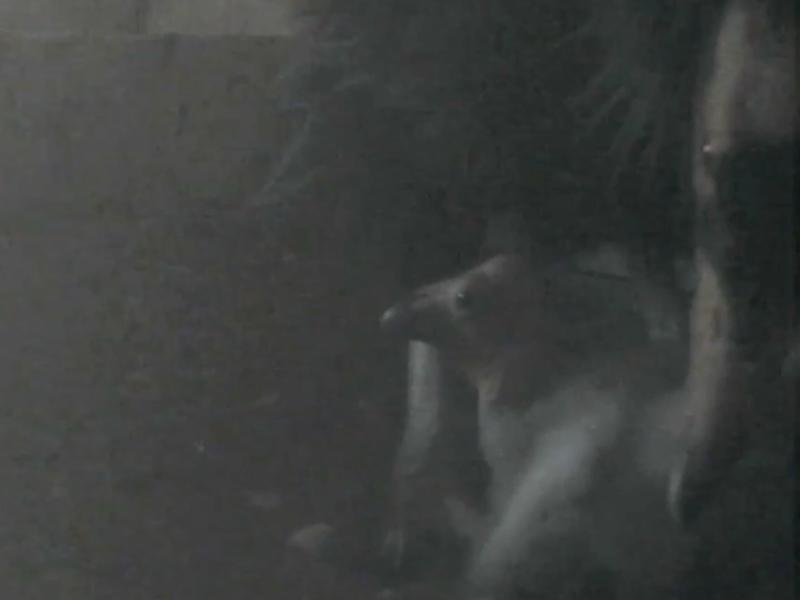
Seven chicks and counting: Zoo welcomes first condors of 2024
Seven fluffy chicks hatched last month at the Oregon Zoo’s Jonsson Center for Wildlife Conservation.April 5, 2024
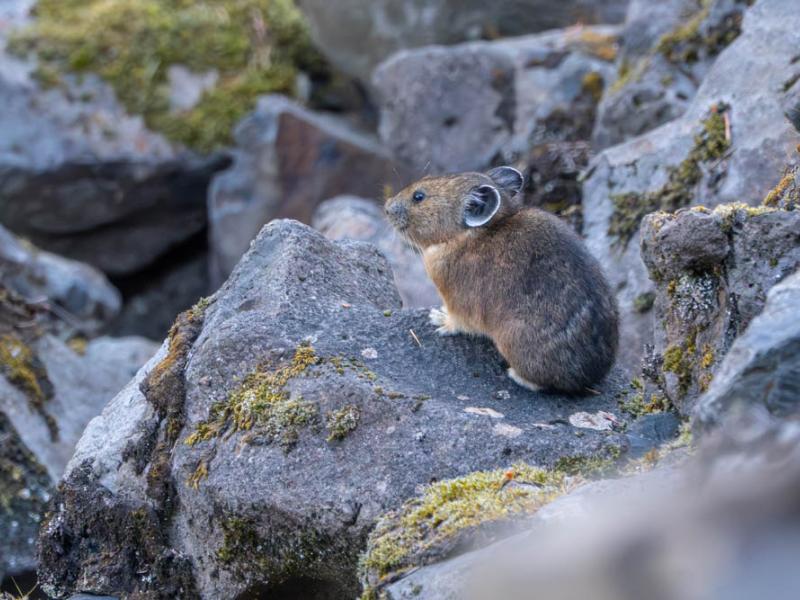
Zoo seeks pika watchers for summer season
The zoo is recruiting volunteers to seek out one of the Columbia River Gorge’s fluffiest residents: the American pika.April 3, 2024

